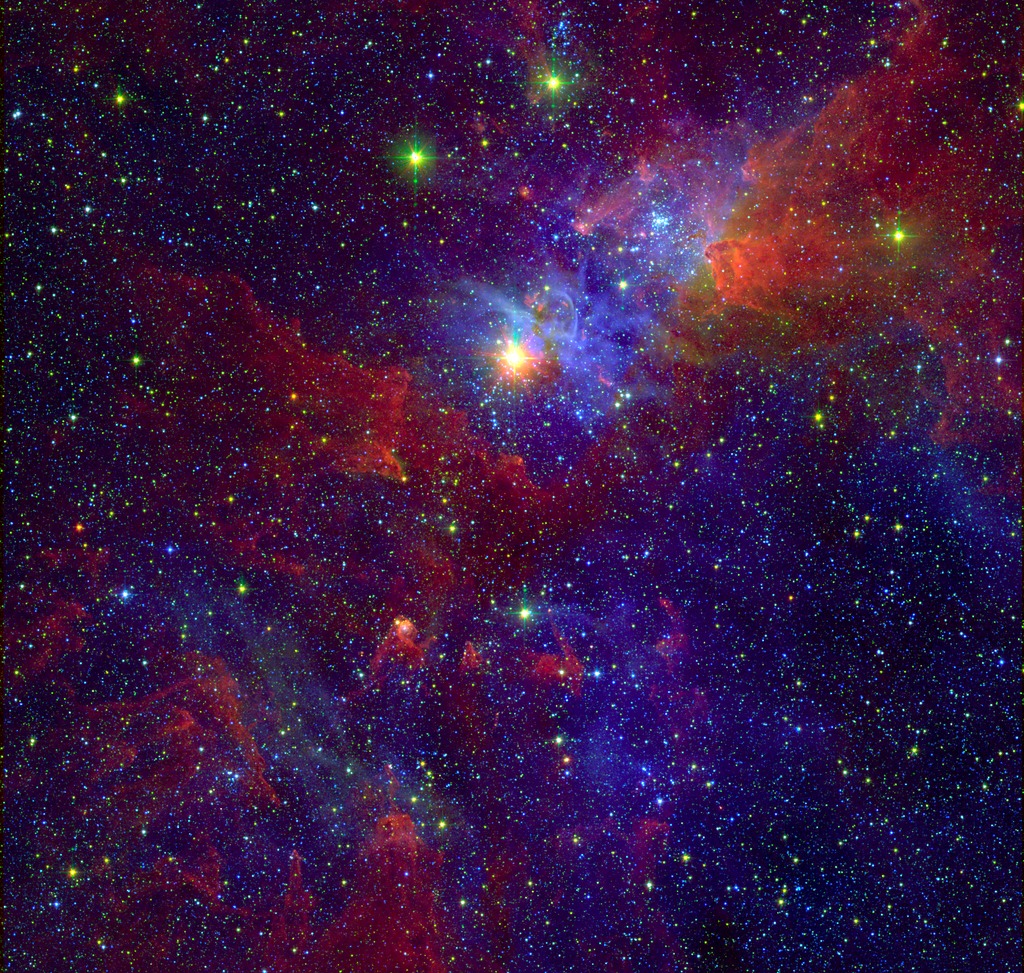
Credit: NASA/JPL-Caltech/M. Povich (Penn State Univ.)
Observation • May 24th, 2011 • sig11-006
sig11-006
Eta Carinae is one of the most massive and brightest stars in the Milky Way. Compared to our own Sun, it is about 100 times as massive and a million times as bright. This famed variable hypergiant star (upper center) is surrounded by the Carina Nebula. In this composite image spanning the visible and infrared parts of the spectrum, areas that appear blue are not obscured by dust, while areas that appear red are hidden behind dark clouds of dust in visible light. A study combining X-ray and Infrared observations has revealed a new population of massive stars lurking in regions of the nebula that are highly obscured by dust. Adding these new massive stars to the known massive stars suggests that the Carina Nebula will produce twice as many supernova explosions as previously supposed.
Visible light in the blue part of the spectrum from the Digital Sky Survey is represented as blue, near infrared light with a wavelength of 2.2 microns from the Two Micron All Sky Survey (2MASS) is green, and infrared observations from the Infrared Array Camera on NASA's Spitzer Space telescope at 3.6 microns is red.
About the Object
- Name
- Carina Nebula • NGC 3372 • Eta Carinae
- Type
- Nebula > Type > Star Formation
- Star > Type > Wolf-Rayet
- Distance
- 10,000 Light Years
Color Mapping
| Band | Wavelength | Telescope |
| Optical | 440 nm | DSS Oschin |
| Infrared | 2.2 µm | 2MASS |
| Infrared | 3.6 µm | Spitzer IRAC |
Astrometrics
- Position (J2000)
- RA =10h 45m 4.8s
- Dec = -59° 48' 34.8"
- Field of View
- 1.0 x 1.0 degrees
- Orientation
- North is 359.4° left of vertical



